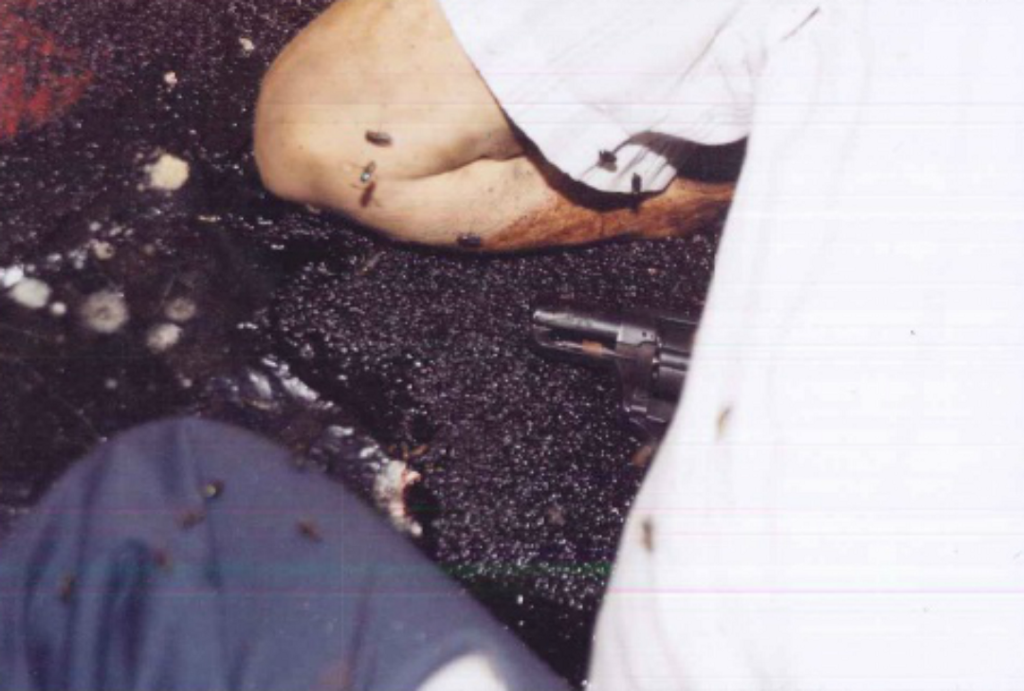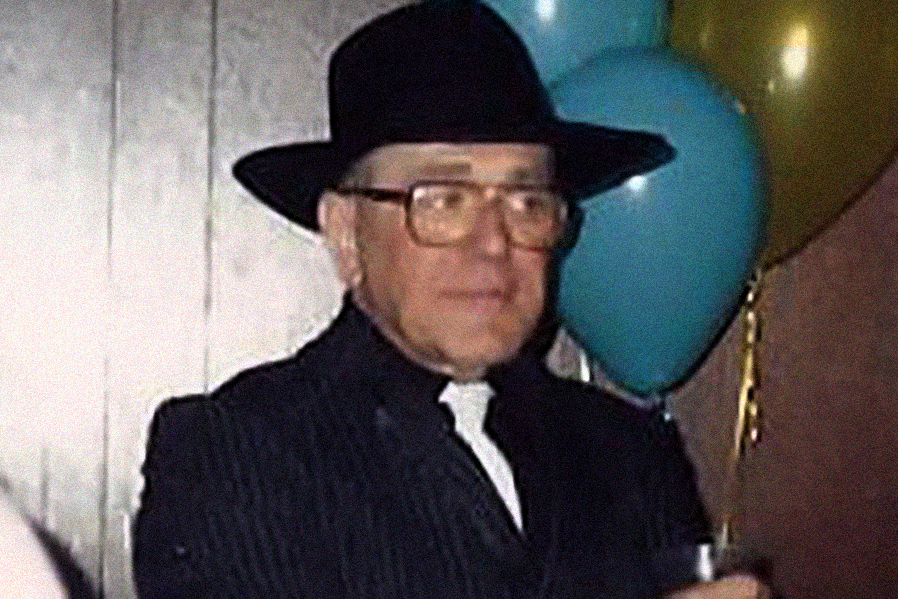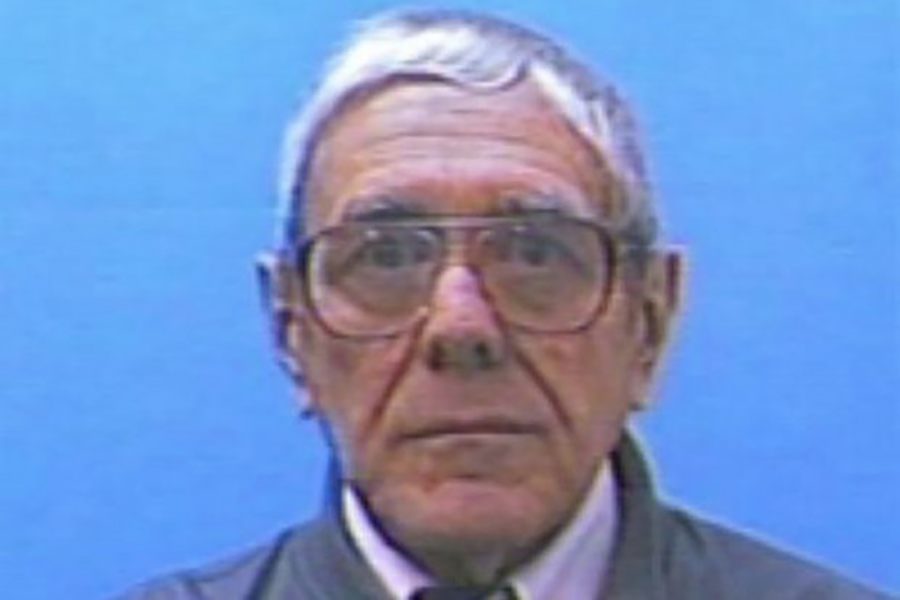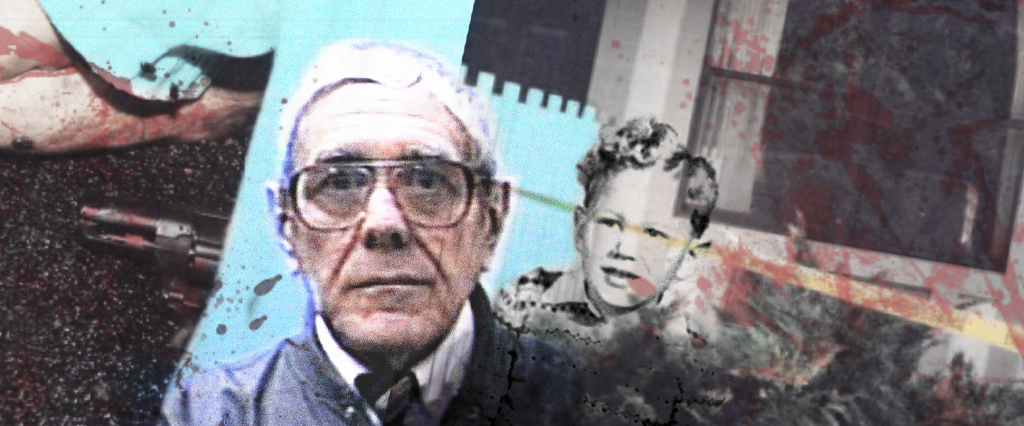Editor’s Note: This piece was originally published on March 6, 2018.
On July 23, 2002, Joseph Newton Chandler III put a .38-caliber handgun to his head and blew out his brains in his bathroom. Flies found him before the cops did. For six days, they fed on his flesh, until the stench of death became unbearable. On the seventh day, after a neighbor complained about the odor, Chandler’s landlord entered the dead man’s apartment in Eastlake, Ohio, and dialed 911. Chandler’s face had decomposed to the point where he was almost unrecognizable.
Detective Theodore Kroczak, one of the first officers on the scene, had to wear a gas mask because of the smell. “I found him on the floor in the fetal position,” he says. “His face was black, and there were thousands of maggots all over his body.”
Five-foot-seven, 160 pounds, Chandler had white hair, which was parted to the side, and gray eyes, which were covered by chunky glasses with walnut brown frames. There were specks of blood on his shirt and trousers and shoes. “He was lying face down on top of the firearm,” Kroczak remembers.

Three months before he died, Chandler purchased a gun from a nearby store for $263.55. (Eastlake is about 20 miles from Cleveland.) He had advanced, maybe terminal, colon cancer. Perhaps he chose his own fate over a slow-motion demise: The bullet from his revolver slid past his skin, muscle and bone and into his brain in half of a second. “There was an exit wound at the top his head,” Kroczak says. “His bodily fluids had drained onto the gun.”
Notifying his next of kin was a challenge. There were no photos of family and friends in his apartment. No letters from the past. No contacts in an address book. Chandler listed a sister as an emergency contact on his rental application, but the address he gave for her was a vacant lot in Columbus. She didn’t exist. “He didn’t leave a suicide note,” Kroczak says. “But who would he write a suicide note to?”
Chandler’s Social Security number was on his driver’s license in his wallet, and it provided some details about his reclusive life. He was 65 years old. He was born in Buffalo, N.Y. His father was Joseph Newton Chandler Sr. His mother was Ellen Kaaber. Both were dead. There was $82,000 in his bank account, but he didn’t leave a will. That meant the state of Ohio would seize the cash unless someone found a next of kin, so probate lawyers searched for unknown relatives — broken branches from his family tree.
A few months passed. Then a genealogist located a Kaaber family who had moved from New York to California. From there, he tracked down Ellen Kaaber’s niece, and she filled in the blanks. Ellen married Joseph Sr. in the 1920s. They had a son on March 11, 1937. His name was Joseph Newton Chandler III.
He died in a car accident in Sherman, Texas, on December 21, 1945.
He was eight years old.
* * * * *
“It started off as a regular suicide, as standard as you can get,” says Eastlake Police Chief Larry Reik. “Nothing suggested foul play. Nothing seemed out of the norm. Then we had loads of questions.”
He wonders if Chandler was a fugitive. “Why did he steal someone’s identity? That takes a lot of work,” he says. “There has to be something behind it.”
Chandler applied for a copy of the dead boy’s birth certificate in Rapid City, S.D., in 1978 and used it to get a Social Security number. (It’s likely Chandler lived there at the time.) Back then, the government only issued Social Security cards to adults, so it was easy for him to steal someone’s identity. Maybe he knew the child’s family in Texas. Or maybe he read about the car accident in the paper.
So who was he really?
It’s hard to know. Chandler worked at the Lubrizol Corporation, a chemical company in Wickliffe, Ohio, as an electrical engineer. Before that, he had jobs in Cleveland, Cincinnati and Philadelphia. But he never talked to his co-workers about his personal life. He never really talked about anything. “He was a bit of a loner,” says Reik.
Chandler’s studio apartment, where he had lived since 1986, contained a small kitchen and a living area with a pull-out bed. There were homemade gadgets (including a breaker box that changed the television channel when the ads came on); a couple of get-rich-quick books (Making Money with Your Computer at Home and How to Make Money in Stocks); and foreign camera lenses, a few clothes in the closet, empty vitamin bottles and a calendar where he crossed out the days until his death.

Chandler’s appearance didn’t provide the police with many answers, either. He had a small scar on his stomach, possibly from a hernia. He had male pattern baldness and probably wore a toupee. But he had no tattoos, birthmarks or other identifying characteristics. An officer dusted Chandler’s revolver for fingerprints, but they were smudged. “I’ve worked here for 30 years,” says Kroczak. “He’s the only person we haven’t identified.”
Eventually, the Feds, who believe Chandler was a criminal, got involved. “I always thought he was on the run,” says U.S. Marshal Peter J. Elliott, the man responsible for finding fugitives in Ohio’s northern district. “He did a good job.”
Like with the local PD, there were only crumbs of evidence to work with — e.g., the computer in Chandler’s apartment didn’t work as someone had dropped it during the investigation. “I’d love to know what was on there,” says Elliott. “Private detectives, who worked on this case before me, said there were internet searches for Nazism and plastic explosives. I wish I could confirm that.”
And so, Elliott worked with what he had. He read those get-rich-quick books. (Perhaps there was a clue on one of the pages.) He traced Chandler’s vehicle registration number. (The Ohio Department of Motor Vehicles has no record of Chandler before 1999.) He watched old episodes of America’s Most Wanted.
Nothing clicked.
Then Elliott pored over unsolved missing person cases. He wondered if Chandler was John William McGrath, who escaped from a mental institution and murdered his family in New Hampshire in 1962. Or George Bugher, who vanished in New Jersey in 1964. Or Elmer Crawford, who electrocuted his pregnant wife and three kids in Australia in 1970. But DNA and dentals confirmed that none of these men were Chandler.
“Maybe he simply ran away from his wife,” says Elliott. “I just haven’t found the wife yet.”
Chandler’s behavior, at times, was peculiar. Elliott says he watched TV static for hours. He memorized zip codes. He could never remember his birthday. Once, he drove to L.L.Bean’s flagship store in Maine, 700 miles away from Eastlake, but returned home because there were no available parking spots. Another time, he went to a Halloween party dressed as Al Capone. He spoke to no one for the entire night.

“His co-workers thought he was odd,” says Elliott. “Once he told someone [at work], ‘Hey, there’s something I want to tell you one day.’ But he never did.” It was one of the few conversations anyone could remember.
Elliott pulled Chandler’s phone records. He called a woman in Texas a couple of months before his death, but she didn’t know who he was — perhaps he had the wrong number. “But what if he was looking for a daughter?” asks Elliott.
Internet sleuths probed the case on Reddit. Did Chandler run away from an evil cult? Did he commit a grisly crime? “I think this man had a really dark past, and while he may not be the East Area Rapist, the Zodiac Killer or D.B. Cooper, I believe his identity is probably tied to some other unsolved mystery,” says Terry McGowan, who posts on the subreddit r/UnresolvedMysteries. He’s calls this his “pet case.”
“If you go to those lengths to start a new life, you’re definitely running from some serious crime,” says author James Renner, whose novel, The Man from Primrose Lane, is partly inspired by the Chandler case. (FOX is turning the book into a TV series.) Renner wonders if Chandler was an “old spook,” who floated from one town to the next without raising suspicion. “The way he so expertly changed his name and moved to a new place makes me think he was a spy.”
Renner spoke to employees at Lubrizol. They said Chandler was paranoid. He would often disappear, sometimes for days. “One time he told someone that the people chasing him were getting close,” says Renner.
“Who were those people?” asks Elliott. “Was he hiding from the mob?”
When Renner examined Chandler’s medical records, one incident caught his attention. In 1989, Chandler arrived at a hospital in Willoughby, Ohio, with lacerations to his penis. He told doctors he cut himself while trying to masturbate with a vacuum cleaner. “I’m not sure if he was honest with them,” says Renner. “Maybe he assaulted someone, and they attacked him back. But I wouldn’t put it past him to have built his own masturbation machine. He was always making gadgets.”

“Why would you lie about something like that?” asks Elliott. “But this guy pretty much fabricated everything. He once told a coworker he married a Catholic woman. Another time, he said he married a Cuban woman who used him to get into the United States. Who knows what the truth is?”
* * * * *
In 2016, there was a break in the case. Forensic genealogist Colleen Fitzpatrick, who helped solve the mystery of another identify thief, Lori Erica Ruff, ran Chandler’s Y-chromosome information through genetic genealogy databases.
There was a match.
Chandler’s real surname was “Nicholas.”
The media jumped on the case, but no one came forward with his first name. “I was disappointed,” says Fitzpatrick. “But Nicholas is common. He gave up his true identity a long time ago, so it’s not a surprise.”
“His real surname suggests Russian ancestry,” adds Renner. “Maybe he did something illegal during the Cold War, and he decided he wanted out.”
In order to solve the case, Fitzpatrick and author Margaret Press set up the DNA Doe Project, a nonprofit that uses genome testing to name the nameless. The public has funded the project — primarily, true-crime junkies who want a conclusion to their favorite unsolved mystery. “Chandler’s DNA has already undergone two rounds of sequencing,” says Fitzpatrick. “We have a really excellent team that’s trying to analyze his genetic information so we can find out who he is.”
For his part, earlier this year, Elliott created a new “Do you know this man?” poster that describes Chandler as “neat,” “intelligent,” “eccentric” and someone who led a “secluded life.” No credible leads have followed, “but I’m confident I’m going to break this case,” says Elliott. “We’re now in the ballpark with his surname.” Still, he admits, “There are a hundred thousand seats in the ballpark.”
Until Elliott knows Chandler’s identity, though, the case file will remain on his desk. There are only a handful of items inside: a death certificate, the coroner’s report and one of three known images of the man alive — his driver’s license photo taken three years before he died and two images from the Halloween party where he dressed up as Al Capone. In the driver’s license photo, Chandler gazes into the lens. His face is wrinkled. His eyes are heavy. His lips are dry. He is old and frail.

Nothing at all, of course, like an 8-year-old boy.
